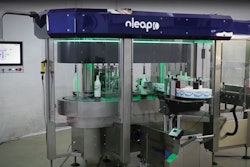
Success requires developing a strategy matrix or toolkit to reliably predict results.
The following process should be on your to-do list:
1. Begin with a collaborative team of stakeholders representing manufacturing, designers, printers, material suppliers, and convertors. This team should compare the processes and materials with the outcome. Develop a checklist of features along with the benefits or disadvantages associated with each feature. Some features may include a photo, trade colors, lot codes, a window, or a specialty finish.
2. Obtain a detailed template from your convertor showing the boundaries and critical zones on your layout. Details should include the outline of the package and location of the cuts and folds, seals, re-closable features, or hang or vent holes. Include print-to-cut or fold-to-cut tolerances to avoid graphics falling across a fold line or appearing in distorted areas such as zippers or seals. To review and communicate the package at this stage, you may use a soft proof, such as a PDF or other electronic document. Once all of those details are buttoned up, you can proceed to printing.
3. Ask your printer, how well can your press print my job? Break this down into these categories:
• Review photo fidelity. How sharp and accurate will my photos be? How will the press handle delicate shading in highlights and shadows? Look at print samples of photos printed on the identical presses. This should give you an indication of what to expect.
• Review color availability and fidelity. Determine that the press can print your colors. Create a checklist of critical colors in your design detailing how colors will be rendered. Compare colors from print samples or with color swatches in a color reference guide. For colors created in process printing, view them in a color bridge book or consult a color gamut chart. Be sure that your colors will fall within process capability.
• Review design elements together: Ask your printer for a match print of the job. Packaging substrates are available in clear, white, and metalized that are treated to accept inkjet proofing. These substrates can be cut, folded, and sealed to simulate the print job in its finished geometry. You will be able to use this to evaluate substrates and over-laminates.
Be sure to discuss the strengths and weaknesses of such a print with your print supplier.
• Review substrates. How will what is behind the ink affect my print job? Ideally, printing is best viewed on a dense white sheet. If your package is on clear or metalized film, your print job may depend on one or more hits of white ink. Ask your printer to demonstrate their white ink, indicating how many hits are present on the sample. Review a match print on clear film sandwiched with samples of white ink or metalized, or white film underneath.
• Review over-laminates and varnish. How will the over-laminate and/or varnish affect my visual outcome? View your print job through various over-laminates in a sandwich similar to your evaluation of substrates and white layers. This will help you understand how they will affect your print image. You may find that decreasing the level of gloss will blur, dull, or dirty your image. Be aware of this before you choose a gloss level.
4. Finally, have a conversation with your convertor, filling team, and finishing team. How does my design affect filling and sealing? Ideally, these issues were handled in the template phase of the project, but after all the adjustments are made, it is a good idea to circle back to show them the finished design. Some questions to ask the filling stakeholders: Is there room on the package to create an effective seal? Are any sealing or filling operations interfering with important visual aspects of the package?
The steps in the process should predict and minimize gaps between your vision, design, and outcome. Every packaging scenario is different and new proofing technologies continue to develop. Coordination of manpower,materials, machines, methods, and environment are critical to developing satisfactory packaging outcomes.

























